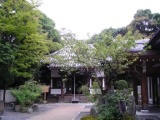
| Home | Chinatowns of the world | Festivals | Culture | Food Culture | History | Countries |
| Chinese Religion | Tours | Sitemap | Documentaries | About | Contact |
|
 |
History |
 |
Emperor's Elixir The First Emperor of China sent Xu Fu, 徐福, to obtain the elixir of imortality. After Xu Fu left, he never returned and some believed that he settled in Japan. Did he settled in Japan? |
 |
Yang Gui Fei, 杨贵妃 as Yokihi |
 |
Landmarks and sites |
 |
Nankinmachi, 南京町,
Kobe Chinatown |
 |
Kobe Kanteibyo,
神户关帝庙 |
 |
Yokohama Chinatown,
横滨中华街 Founded in 1859, the Yokohama Chinatown is the largest Chinatown in Japan and in Asia. It is also said to be the second largest Chinatown in the world |
 |
Sennyu-Ji Temple, 泉涌寺, Kyoto Japanese Buddhist monastery with a sculpture of Lady Yang Gui Fei, 杨贵妃 as Guan Yin. |
 |
Yokohama Kanteibyo,
横滨关帝庙 A temple in Yokohama Chinatown dedicated to Guan Gong. The temple has been damaged during various periods of its history but always rebuilt by the local community. |
 |
Yokohama Mazu Miao, 横滨妈祖庙 The latest Mazu temple in Yokohama Chnatown and an interesting case study to show how modernity need not be about big shiny flashy buildings. |
Coming soon: A series of new articles on Japan.
Why not join Chinatownology mailing and be updated when new articles are published. See Join us.
Related articles:
Chinatowns of the world

Yokohama Chinatown

Yokohama Chinatown circa 1903


Kobe Chinatown

| Join us on | Youtube | |||
| Copyright © 2007-24 Chinatownology, All Rights Reserved. | ||||
 Japan
Japan